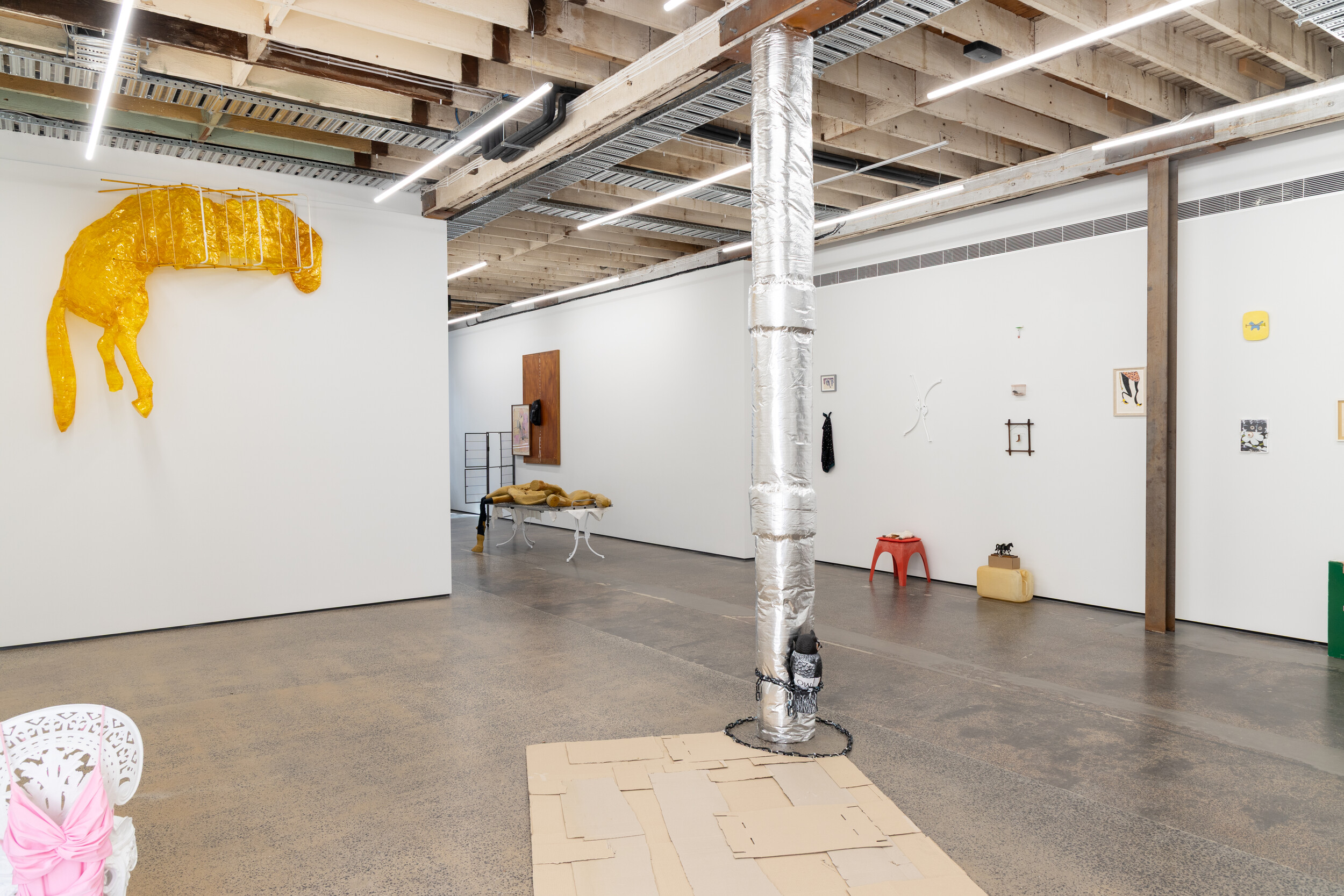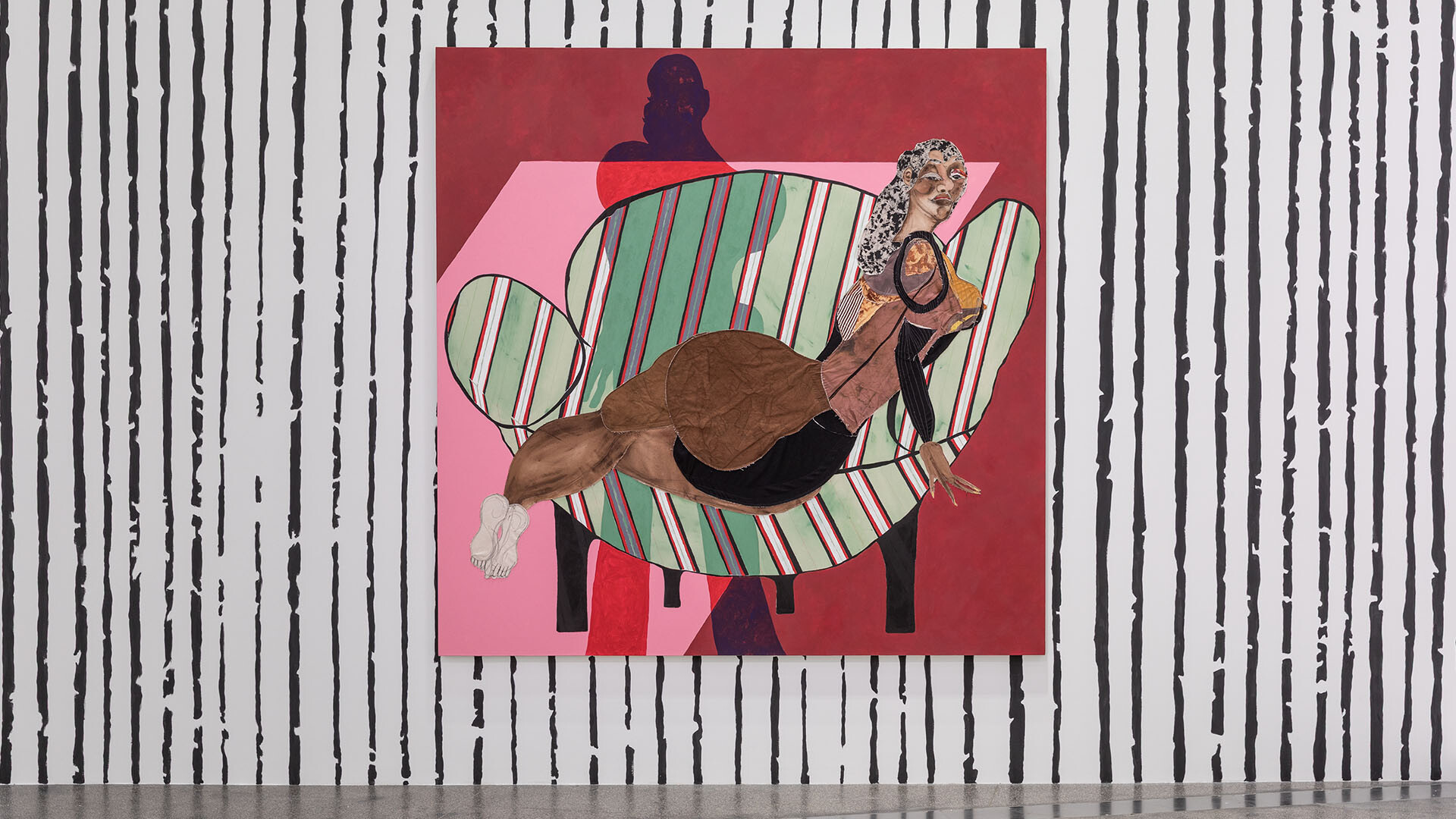Goddess: Power, Glamour, Rebellion
Kate Meakin
If there is one Goddess making a visitation in Melbourne at the moment, it’s Barbie. The newly released blockbuster film, directed by Greta Gerwig, promises to both satirise and delight in the legacy of the ageless, entrepreneurial blonde doll who embodies all of the normative cultural fantasies of a young white woman of her time. Like Venus, she was born a fully grown adult in perfect proportions, though dressed in a swimsuit instead of the sea. Her nipples and genitals were erased entirely from the curious eyes and hands of children rather than elegantly obscured by a modest lock of hair or fold of cloth, which is how we are used to seeing goddesses in art or actresses with specific nudity clauses in their film contracts. Barbie’s sexuality has always been both present and absent. Many children who grew up playing with the doll have memories of rubbing her together with Ken or another Barbie (in my case it was Batman, they then had a Pikachu baby together).
Since her debut in 1959, the influence Barbie’s image has had on the development of gendered, racial, and body image norms in children has been a topic of controversy. Mattel, her creator, has responded by diversifying Barbie’s acquaintances over the years to include representations of People of Colour, diverse body shapes, and disabilities. She has also been seconded to a number of ambitious vocations—doctor, astronaut, president, film director, the list goes on. Her live-action avatar, actress Margot Robbie, describes the conundrum in a recent New York Times interview: “There’s been real issues with Barbie over the years and there’s been real love … The conversation has kept evolving. I think ultimately it is a conversation we’re having about ourselves, but it’s easy to put it on Barbie.” What does it mean to think pink in today’s film industry?

Some light could be shed on this discussion by considering the influence that feminine icons, specifically actresses, have as “role models,” which is a central concern of ACMI’s current exhibition Goddess: Power, Glamour, Rebellion. 120 years of film history is considered through an “acteurist” lens, a term that MoMA film curator David Kehr used to describe a way of reading film that is “devoted to actors who were able to develop their screen personalities with sufficient consistency and vivacity that they themselves became vehicles of meaning in their movies.” Curator Bethan Johnson has said of the show that she wants it to “celebrate artists who have done so much to help challenge ideas about women’s fragility.” Goddess showcases a selection of archival costumes, photographs, press clippings, memorabilia, and excerpts from films that “Screen Goddesses” have appeared in over the years. It also encompasses a film program, book of essays, and a conference, which is set to focus on both hidden and hyperbolic narratives of feminine empowerment that are achieved through the visual spectacle of cinema and the mediascape that surrounds it.
Organised into thematic chapters rather than structured chronologically, the show seeks to place historic films and performers in direct dialogue with contemporary cinema culture. Such discursive strategies are often used in contemporary exhibition making to “disrupt” canonical narratives and mobilise the audiences to think their way through the relationship between the content and the form that exhibitions take and how they work to produce meaning. Goddess’s curatorial gestures of “re-mixing” that past through the lens of the present, however, is, as we shall see, heavy handed and overly simplified, ultimately distracting from the material they seek to frame.

The first work we encounter is a soundscape projected from speakers installed on a blue/pink iridescent feature wall that brings to mind textural memories from a recent past trend of manicure and iPhone cases. ACMI commissioned local composer and DJ Chiara Costanza to make the piece entitled In her words, which samples audio excerpts of prominent actresses (mostly Australian and American) speaking in interviews, acceptance speeches, and films, layering them into a disjointed conversation about the visibility of women on screen, with one actress’s quote leading vaguely to the next. For example:
“Even though that woman was so powerful to me, she was still afraid of living life as an independent woman.”
“I am ambitious, Black, strong, talented.”
“Women have central roles that are complex and drive the narrative.”
Selma Blair, Viola Davis, and Rachel Weisz are the actresses speaking, as you will learn if you view the online transcript of the work, but in situ the quotes are contextless and unattributed. I Google the Davis quote and find it is lifted from a speech she gave in her role as a lawyer in the TV show How to Get Away with Murder. The quote has been trimmed from its original form which was: “I’m ambitious, Black, bisexual, angry, sad, strong, sensitive, scared, fierce, talented, exhausted.” The conflicting emotions this line originally conjure have now been simplified into an “empowering” catch-phrase. This edit seems odd given the following line from Weisz promotes strength obtained through acknowledging “complexity.” The signage describes the work as representing “stars across time declaring, in one voice, that women be heard not just admired.” Yet the way the voices are cut together flattens them out into a singular slug of aphorisms that quickly fatigues. Listening to the reel in full is reminiscent of skimming an A to Z quotes webpage—the effect is distancing, superficial, and ironising.
This is the first of many montage-style works that proliferate throughout the exhibition, and one of two that focus on actresses appearing as themselves in the media. The second, a video titled Spotlighting Change, layers clips of actresses answering interview questions and accepting awards in moments that are framed as “fighting for equality and diversity on screen.” This work is in some ways as exhausting as the former in its desire to showcase women “speaking up” by measure of giving air time to many voices rather than paying close attention to how concepts of “equality” and “diversity” are used in the media. Recent quotations from Michelle Yeoh, Trace Lysette, and Deborah Mailman are juxtaposed with archival footage of actresses such as Hattie McDaniel, Jane Fonda, and Audrey Hepburn. The work is more engaging than the former in its ability to show the glimmers of pathos and charisma that actresses emit from their eyes and bodies, reminding us that cinematic meaning is often produced in the affective, vaporous, stylistic details of performance rather than in the specifics of plot. Helen Mirren’s response to Norman Parkinson’s comments on her physique—”because serious actresses can’t have big bosoms, is that what you mean?”—has power because it is delivered with impeccable timing, as she pivots a decorative feather in her lap and raises her eyes to gage his response.
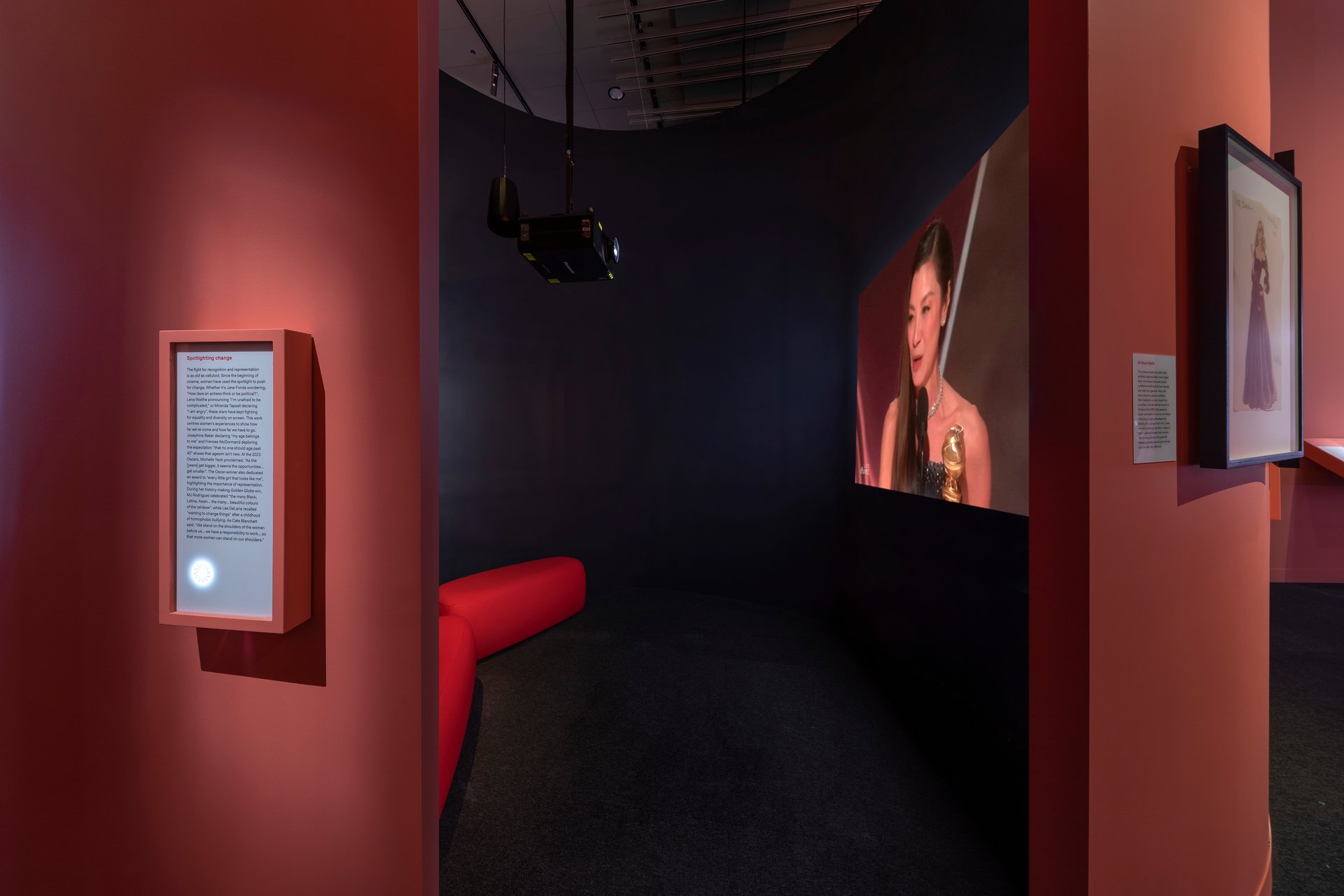

Overall, the exhibition’s presentation of “fictional” and “nonfictional” performances by actors is staged in an uncritical way, which feels like a missed opportunity to highlight the complex intertextual relationship that can emerge between cinema and the archive of media fragments that surround its circulation and preservation. The inclusion of The Watermelon Woman (1996), directed by and starring Cheryl Dunye, stands out as a singular work in the exhibition as the only independently made film, and as one which takes on the archival politics of how film histories are persevered or ignored by institutions. Dunye plays a stand-in for herself (also named Cheryl), an aspiring filmmaker who investigates the life a forgotten Black actress from the 1930s named Fae Richards, who was known only for her minor film roles portraying stereotypical “mammy” characters. In a hybrid documentary/fiction style, the film follows Cheryl uncovering the forgotten history of Fae through fragments sourced from personal archives in lieu of any institutional records that would historicise her. The search for Fae’s story culminates in the creation of a biographic film about her, that in turn acts as a cinematic self-portrait of Cheryl (and Dunye). Dunye collaborated with photographer Zoe Leonard to stage an extensive and convincing body of archival materials depicting the fictionalised Fae for the production of this film, unable to access substantial source materials of real actresses from the same period. In inventing a “forgotten” history of film, Dunye is able to self-reflexively imagine a future for herself.
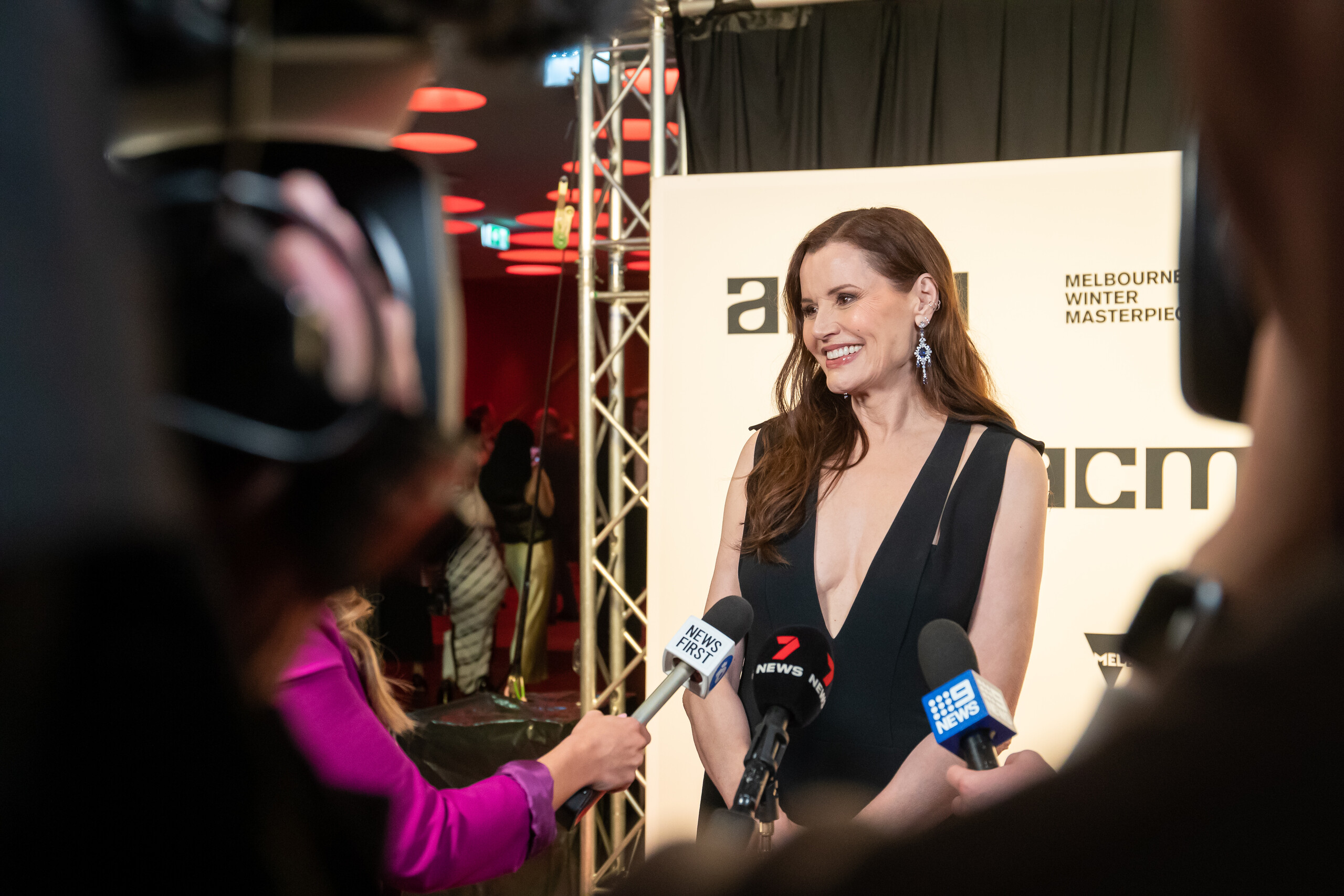
“If she can see it, she can be it” is the tagline of the Geena Davis Institute of Gender in the Media, which is the exhibition’s industry partner. The Institute was founded in 2004 by the Hollywood actress herself—also a Mensa member and competitive archery athlete—and aims to use “data-driven research, education, and advocacy to empower and inspire content creators to reimagine the media landscape to reflect the world we live in.” Davis and the organisation’s CEO Madeline Di Nonno travelled to Melbourne as “ambassadors” for the exhibition’s red-carpet-gala-style launch, as well as to speak at the film industry conference “Being Seen on Screen,” which was developed alongside the exhibition. The conference, now available to watch on ACMI’s website, showcased a number of panel discussions on the representations of gender, race, and disability in contemporary Australian film and television. I attended the event, and from the moment I arrived it was apparent that Davis was the talking point, if not the drawcard for many attendees, a number of whom I overhead re-confirming with one another the time Geena would be taking the stage. The only keynote speaker of the day, her presence was a testament to both the Australian museum and film industry’s reliance on high-profile, international artists to deliver “blockbuster” projects. Other notable Australian actresses appeared as panellists on the day, such as Rachel Griffiths, Sigrid Thornton, Elaine Crombie, Rachael Maza, and Pallavi Sharda—but their faces seldom, if at all, appear on the exhibition’s many screens which are dominated by examples from American cinema. The dress Crombie wears in Kiki and Kitty (2017) is displayed, but her exuberant performance in it is not.
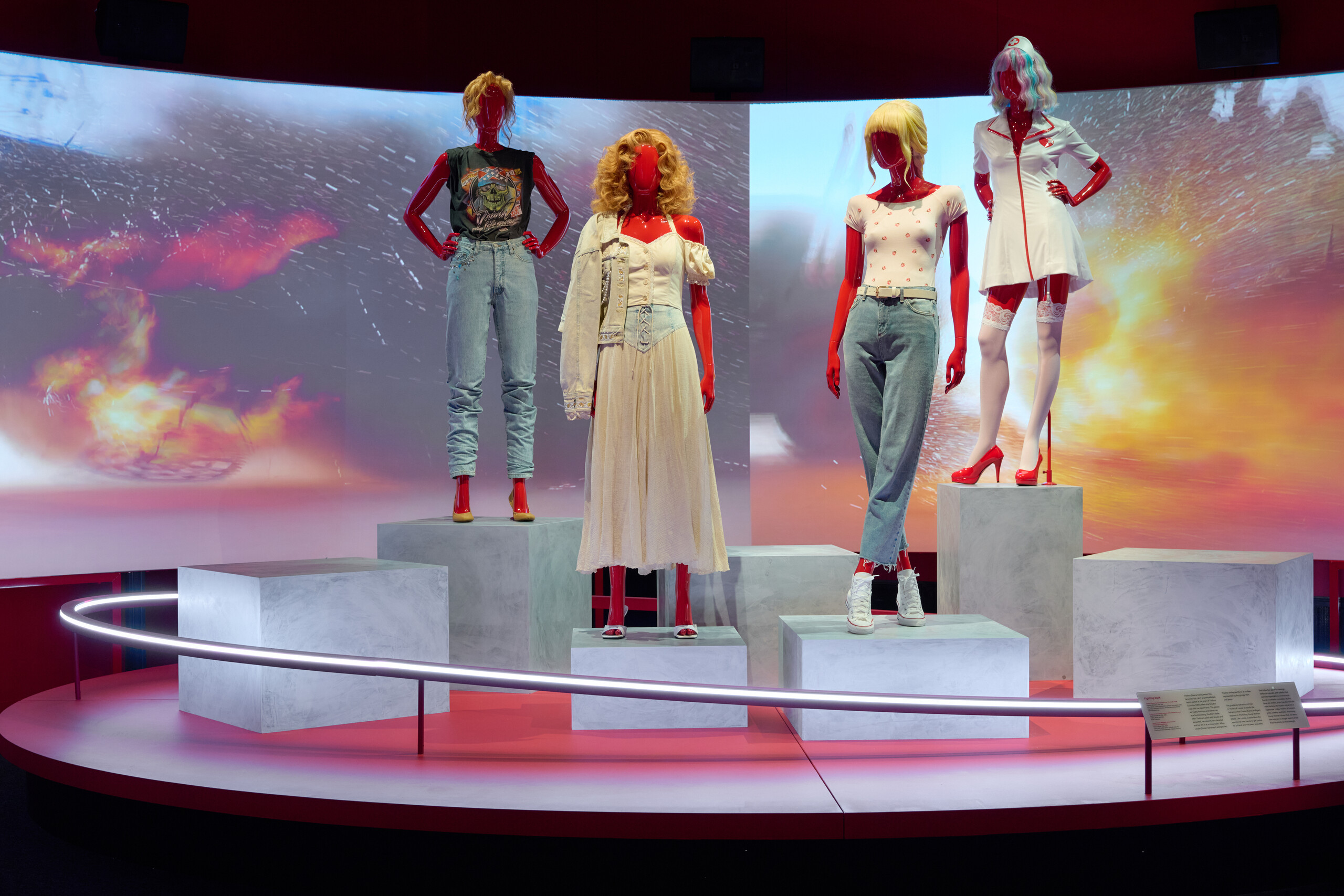
After a charming introduction peppered with anecdotes about her acting career, Davis’s speech focused on promoting statistical data as a tool that can be wielded to create positive role models for women and minority groups, so that “on-screen can fix the problem that it creates off-screen.” She described a recent survey conducted by her Institute with over two thousand female scientists, in which sixty-three percent cited the X-Files character Agent Scully as a role model that increased their confidence in pursuing a career in a male-dominated profession. She also described a new software program that the institute has designed called Spellcheck for Bias, which has been developed for use by film and television studios. The software analyses scripts before they go into production to “determine the representation of six identities: gender, race/ethnicity, LGBTQIA+, disability, age fifty-plus, and body type. In addition, Spellcheck for Bias provides an analysis of Tropes and Stereotypes and such attributes as racial injustice violence, discrimination, and intelligence.” I couldn’t help but wonder: Could this be the software they were using to help write the script for HBO’s clumsily diversified Sex and the City reboot And Just Like That … ? Davis, in her deep, infectious American accent, sells the tool as a convenient solution to representational inequality: “We can catch it before we cast it.”
This tagline stayed with me for some time after the talk, and when I watched Thelma and Louise for the first time after seeing Davis speak, one performance became embedded in the next. In the film, her character Thelma is robbed of all her money by a young, blonde, hitchhiking thief played by Brad Pitt. She is initially enthralled when he confesses to her that he steals to get by, and even performs his convenience store heist routine for her amusement after they make love. When he leaves, Thelma is distraught when she discovers he has left her penniless, but continues to wear his denim shirt. Driving past a convenience store hours later, she knows her only option left is to work with the grammar she’s been given and be like Brad—she performs his routine word for word and gets the contents of the till. There are no bullets in her gun; she is armed with the understanding that if she hits the right performance markers she’ll get away with the bounty.
This exhibition gives more time to showing us pink than performances—the colour masks the walls, plinths, and mannequins on display in ACMI’s galleries. Since the 2017 Women’s March in Washington D. C., where the “Pussyhat” was worn by thousands to create a striking sea of pink, the colour has garnered an affirmative association with mainstream feminism. Later that year, pink became the shade of #metoo, going viral in the wake of a New York Times feature detailing decades of cover-ups of sexual assault allegations against prominent Hollywood producer Harvey Weinstein. Over one hundred actresses and film industry workers came forward saying they too had been sexually harassed or assaulted by Weinstein after the article’s publication. The ripple effects of the movement are still being felt inside and out of the film industry, and the language of “empowerment” that runs through the exhibition is inseparable from the collective memory of sexual and symbolic violence that Hollywood actresses have always experienced. Perhaps what we can inadvertently learn from this very pink show is how both the museum and the film industry, like other neoliberal institutions, see the endpoint of feminism as having more representation of “women”—but the means to gaining this representation is promoted though an existing set of industry relations that in no way challenges systemic inequality, on-screen and off.
Kate Meakin is Melbourne based artist & current PhD candidate at RMIT University.
